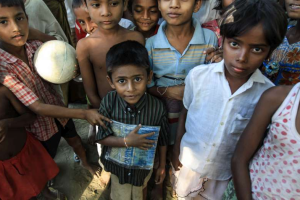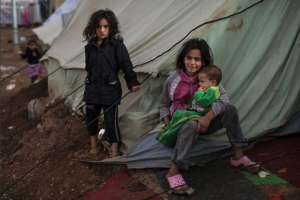
Students new to Canada often struggle with adjusting to life in an unfamiliar land. Students from refugee backgrounds, in addition, are likely to have experienced significant loss, grief stress and trauma in their refugee journeys. These experiences can profoundly shape students’ responses in the classroom.
Students with refugee backgrounds often have more complex social needs and emotional needs than other students. The student is likely to:
- have undergone significant loss and may still be grieving
- be sensitive to any cues of danger or threat at school
- be struggling with the aftermath of traumatic experiences, including health issues, with an exhausted or minimal family support system
- be undergoing transitions in living arrangements, including experiencing severe poverty issues
- have very little English to communicate needs or concerns.
This section of the website provides information to strengthen the ability of school staff to support students’ socio-emotional development. The information incorporates theory and practice from some related fields which include behavioural studies, neurodevelopmental research and trauma- informed (or trauma-sensitive) practice. These resources build understanding of trauma and loss, resiliency, emotional awareness, and safety and provide practical, evidence-based strategies. The solutions-based framework promotes school-wide, classroom, and individual approaches and interventions with a focus on building connections, creating a safe environment, and building emotional and conflict resolution skills. Best practice models include, for example, Trauma-Informed Practices promoted by the Trauma Academy and Traumatic Stress network. For more information about the foundational theory see the extensive list of References
The losses are often deeply personal and sweep away basic support systems that would normally be available to help cope with difficulty. Grief, as a natural reaction to these losses, can become even more complicated in the face of multiple sweeping changes and traumatic experiences. For more information, see Loss, Grief, Stress and Trauma: An Introduction.
Ongoing stress and traumatic events can have significant impact on attention, memory and behaviour. Past and present traumas can result in lifelong changes that impact every area of life. The behavioural and adjustment Challenges identified in the Student Background section can be understood in this context.
To read more about the developmental impact of war trauma on children and principles of care for these children see War Trauma in Refugees: Red Flags and Clinical Principles.
Traumatized students may also develop sensitivity to threat, real or perceived. Recent brain research has explored how fear changes thinking and the impact of fear on a student’s cognitive functioning. Understanding the cues and triggers associated with the student’s response to fear can allow teachers to target effective strategies in the moment.
Recent brain research highlights that:
- in the face of threat, we have built-in survival responses that create fight/flight or freeze/surrender patterns
- our survival responses shift how we think, and where our attention is directed
- threat, real or perceived, mobilizes these survival responses.
- students who have already experienced trauma are often quicker to move into more intense fear responses. These students may have triggers that catalyze fear responses.
In the classroom a student might access these different internal states in response to a threat. Each of these internal states is connected to a regulating brain system. The brain system directs what the student attends to and how the student thinks.
Teachers can learn to recognize the cues of each internal state, and the strategies that engage the student, and help redirect to calm. To learn more and to see sample strategies, see the article in the toolkit:
There are many resources available to assist educators to understand trauma and to develop trauma-sensitive practices. See the Links: Resources section.




